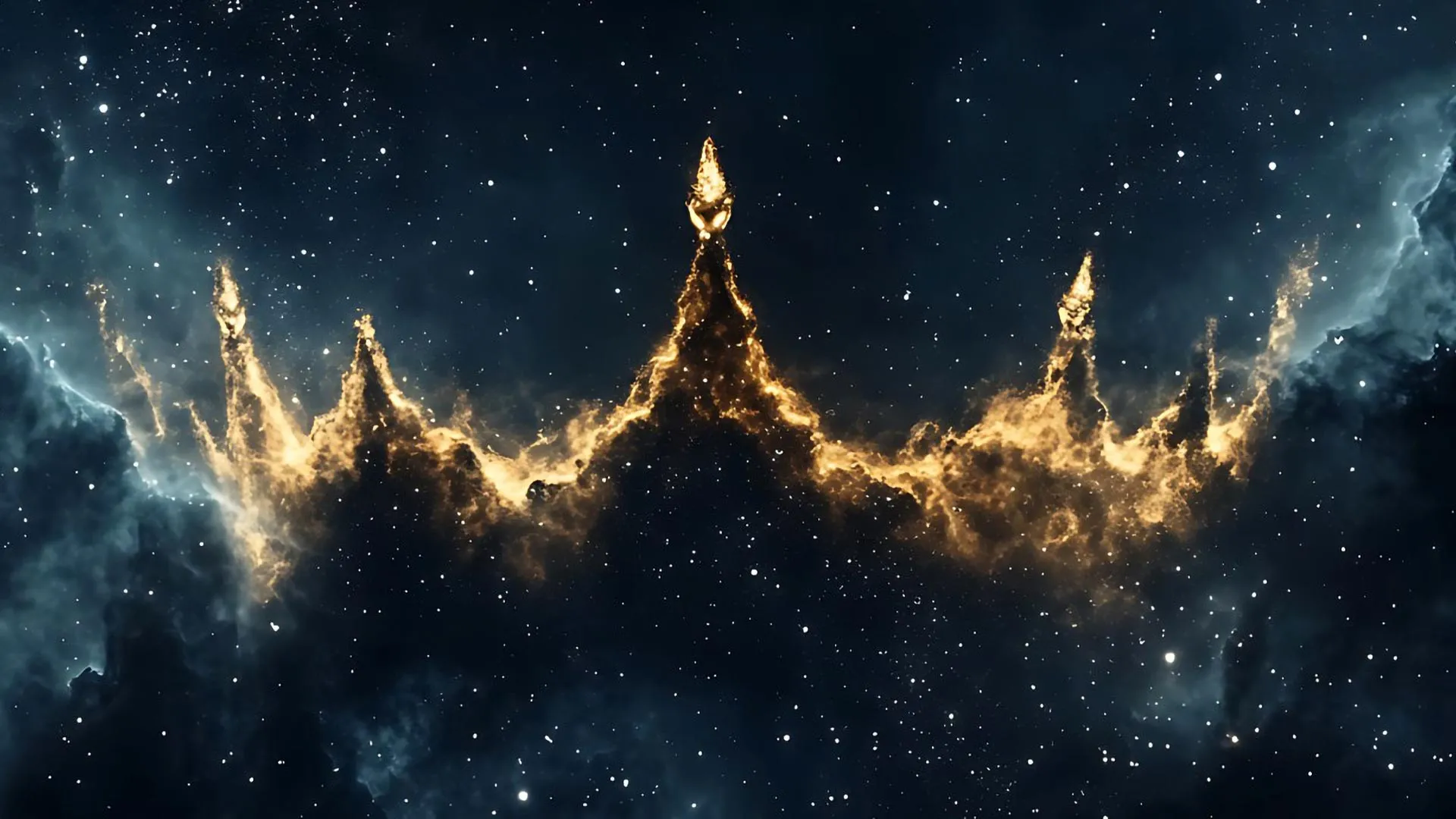Scientists may have finally found the Universe’s missing sulfur
- Date:
- August 19, 2025
- Source:
- University of Mississippi
- Summary:
- For decades, scientists have puzzled over why so little sulfur appears in space, even though it is one of the most common elements in the universe and vital to life. A new study suggests that the missing sulfur may be locked away in icy dust grains, forming unusual molecular shapes like crown-like rings and hydrogen-linked chains. These hidden forms make sulfur difficult to detect with telescopes, helping explain why its presence has been underestimated for so long. Researchers now believe they may be closing in on solving a mystery that has lingered in astronomy for years.
- Share:

For decades, astrochemists have been looking for sulfur atoms in space and finding surprisingly little of the element that is a key ingredient to life. A new study could point to where it has been hiding.
An international team of researchers including Ryan Fortenberry, an astrochemist at the University of Mississippi, and Ralf Kaiser, professor of chemistry at the University of Hawaii at Mānoa and Samer Gozem, computational chemist at Georgia State University, published their research in the journal Nature Communications.
"Hydrogen sulfide is everywhere: it's a product of coal-fired power plants, it has an effect on acid rain, it changes the pH levels of oceans and it comes out of volcanoes," Fortenberry said. "If we gain a better understanding of what the chemistry of sulfur can do, the technological commercialization that can come from that can only be realized with a foundation of fundamental knowledge."
Sulfur is the 10th most abundant element in the universe and is considered a vital chemical element for planets, stars and life. The lack of molecular sulfur in space has been a mystery for years.
"The observed amount of sulfur in dense molecular clouds is less - compared to predicted gas-phase abundances- by three orders of magnitude," Kaiser said.
The answer might lie in interstellar ice.
In cold regions of space, sulfur can form two distinct, stable configurations: octasulfur crowns, which are a group of eight sulfur atoms configured in ring-like crowns, and polysulfanes, chains of sulfur atoms that are bonded by hydrogen. These molecules can form on icy dust grains, locking sulfur into solid forms.
"If you use, for instance, the James Webb Space Telescope, you get a specific signature at specific wavelengths for oxygen and carbon and nitrogen and so forth," Fortenberry said. "But when you do that for sulfur, it's out of whack, and we don't know why there isn't enough molecular sulfur.
"What this work is showing is that the most common forms of sulfur that we already know about are probably where the sulfur is hiding."
Kaiser and Fortenberry's research showed that these sulfur-rich molecules may be abundant in icy regions of interstellar space, giving astronomers a potential road map to solving the sulfur puzzle.
"Laboratory simulations of interstellar conditions such as this study discover possible inventories of sulfur-containing molecules that can be formed on interstellar ices," Kaiser said. "Astronomers can then utilize the results and look for these polysulfane molecules in the interstellar medium via radio telescopes once sublimed into the gas-phase in star forming regions."
The reason sulfur has been so difficult to find is that the bonds it forms are always changing, going from crowns to chains and a variety of other formulations.
"It never maintains the same shape," Fortenberry said. "It's kind of like a virus - as it moves, it changes."
The researchers' work identifies possible stable configurations that astronomers can search for in the universe.
"The thing that I love about astrochemistry is that it forces you to ask hard questions, then forces you to come up with creative solutions," Fortenberry said. "And those hard questions and creative solutions can have significant, unintended positive consequences."
Story Source:
Materials provided by University of Mississippi. Note: Content may be edited for style and length.
Journal Reference:
- Ashanie Herath, Mason McAnally, Andrew M. Turner, Jia Wang, Joshua H. Marks, Ryan C. Fortenberry, Jorge C. Garcia-Alvarez, Samer Gozem, Ralf I. Kaiser. Missing interstellar sulfur in inventories of polysulfanes and molecular octasulfur crowns. Nature Communications, 2025; 16 (1) DOI: 10.1038/s41467-025-61259-2
Cite This Page: